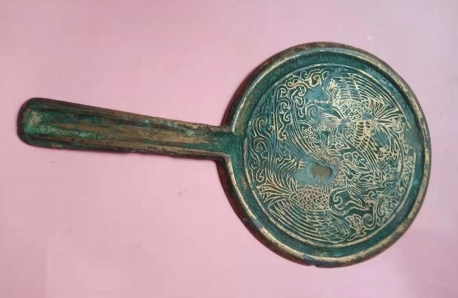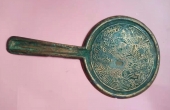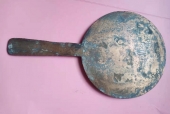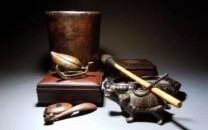宋代凤纹手柄铜镜
- 编 号:805408
- 销售状态:展示 展览中 2022.01.11号后可提货
- 库 存: 1
- 售 价:议价
买家服务热线:
400-601-8111
(平台服务时间:周一到周五 9:00-17:00)
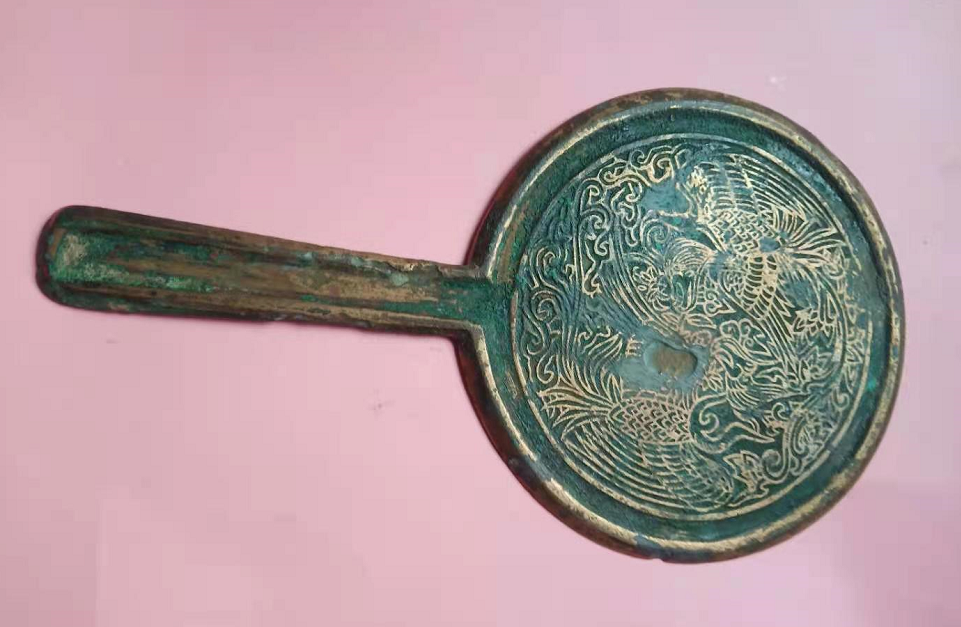
- 资质:
- 评分:
1分 2分 3分 4分 5分 6分 7分 8分 9分 10分 7分
- 印象:
- 经营时间:2023年
- 展厅面积:500平米
- 地 区:上海-静安
作品信息
交易评论
本画廊其他作品
| 创作年代 | 宋辽金 | ||||
|---|---|---|---|---|---|
| 作品分类 | 金属器- 铜器-青铜器 | 品相 | 有瑕疵 | 器型 | 镜 |
| 作品标签 | |||||
| 适用空间 | |||||
作品介绍
此凤纹柄镜为宋金时期的产物,镜面直径:5cm,总长9cm ,镜面两只凤凰盘曲,凤凰,传说中的百鸟王。雄叫凤,雌叫凰。凤凰并不存在,是古人幻想的神鸟。象征祥瑞,吉祥,和谐。早期社会生产力低下,人们在严酷的自然环境里生存,不能独立支配自然力,对自然界充满幻想,崇拜各种比人类更强大的自然或超自然力量,这就是图腾和鬼神产生的社会基础。铜镜上的凤凰纹,生气盎然,快乐欢趣,成双成对,嘴衔系飘带或瑞草的同心结,婚庆祝颂,象征着美满幸福。唐朝的凤凰热,以凤凰喻人,以凤凰作饰,以凤凰美物,以凤凰喻爱。凤身四周环绕如意云头纹,线条飘逸,设计精巧细致。
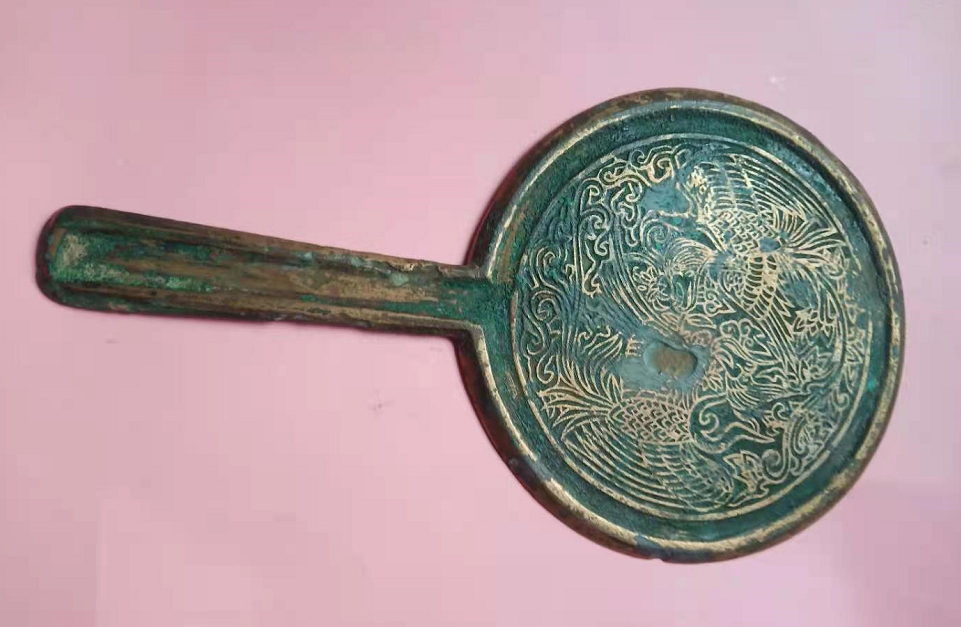 汉代女性十分爱美,特别讲究脂粉黛泽之化妆,所以张敞以为妇画眉而轰动长安城,孙寿以“啼妆”、“愁眉妆”而引领一时风尚,铜镜又叫鉴或照子。远古时期,人们只能借助自然界水的反光作用来观察自己的容貌,后世陶鉴、铜鉴都有盛水鉴容的功用。铜镜发明后,人们有了专门的照面用具,且携带方便。在长沙的战国楚墓中出土过不少风格相同的龙纹铜镜,可知该镜是由楚式镜发展而来。西汉以后铜镜也被用作男女爱情的信物,取“心心相印”之寓意。生前互相赠送,朝夕相伴,死后随之埋入墓中,以示“生死不渝”。
汉代女性十分爱美,特别讲究脂粉黛泽之化妆,所以张敞以为妇画眉而轰动长安城,孙寿以“啼妆”、“愁眉妆”而引领一时风尚,铜镜又叫鉴或照子。远古时期,人们只能借助自然界水的反光作用来观察自己的容貌,后世陶鉴、铜鉴都有盛水鉴容的功用。铜镜发明后,人们有了专门的照面用具,且携带方便。在长沙的战国楚墓中出土过不少风格相同的龙纹铜镜,可知该镜是由楚式镜发展而来。西汉以后铜镜也被用作男女爱情的信物,取“心心相印”之寓意。生前互相赠送,朝夕相伴,死后随之埋入墓中,以示“生死不渝”。
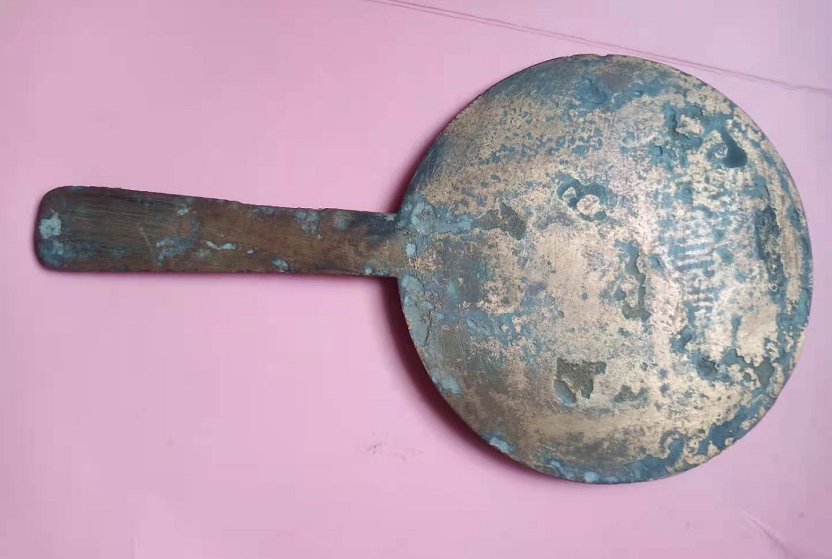 此铜镜手柄攥刻花纹,镜面浮雕双凤纹,凤凰皆浮雕感很强,刻画细腻,神态刻画细腻传神,构图变化多端。装饰上自由活泼,大方美观,趋于世俗,寓有吉祥富贵和向往仙山琼阁的审美观念。匠人对于凤凰瑞兽的形体特征表现的非常之娴熟,造型优美灵动,体态矫健,细微之处各有妙趣,极富动态之感,充满生机的情态。造型圆润,构图饱满,线条华丽流畅,实属难得一见的神品。
英文翻译:
This Phoenix handle mirror is a product of the song and Jin Dynasties. The diameter of the mirror is 5cm and the total length is 9cm. There are two phoenix in the mirror. The Phoenix is the legendary king of birds. The male is called Feng and the female is called Huang. Phoenix does not exist, is the ancient fantasy bird. It symbolizes auspiciousness, auspiciousness and harmony. In the early society, the productivity was low. People lived in the harsh natural environment, could not control the natural forces independently, and were full of fantasy about the nature. They worshipped all kinds of natural or supernatural forces that were more powerful than human beings. This is the social basis for the emergence of totems and ghosts. The phoenix pattern on the bronze mirror is full of vitality and joy. It is in pairs. The mouth is tied with ribbon or auspicious grass. The wedding celebration is a symbol of happiness. In the Tang Dynasty, the Phoenix fever was characterized by its metaphor for people, its decoration, its beauty and its love. The Phoenix body is surrounded by Ruyi cloud head pattern with elegant lines and exquisite design.
In the Han Dynasty, women loved beauty very much and paid special attention to make-up. Therefore, Zhang Chang made a sensation in Chang'an City for her thrush. Sun Shou led the fashion with "crying makeup" and "frowning makeup". The bronze mirror was also called Jian or Zhao Zi. In ancient times, people could only observe their appearance with the help of the reflection of natural water. Later, pottery and bronze mirrors had the function of holding water. After the invention of the bronze mirror, people had special tools for looking at the face, and it was easy to carry. Many bronze mirrors with the same style were unearthed from Chu tombs of Warring States period in Changsha. After the Western Han Dynasty, bronze mirrors were also used as keepsake of love between men and women, taking the meaning of "heart to heart". They gave each other gifts and accompanied each other day and night. After death, they were buried in the tomb to show that "they will live and die forever".
The handle of the bronze mirror is engraved with patterns, and the mirror surface is embossed with double phoenix patterns. The Phoenix is highly embossed, and the depiction is delicate and vivid. The composition is varied. The decoration is free and lively, generous and beautiful, tends to be secular, and contains the aesthetic concept of auspicious wealth and yearning for Xianshan qiongge. The craftsman is very skillful in the physical characteristics of Phoenix auspicious beast, with beautiful and flexible shape, vigorous posture, interesting subtleties, dynamic feeling and full of vitality. The shape is mellow, the composition is full, and the lines are gorgeous and fluent. It is a rare masterpiece.
此铜镜手柄攥刻花纹,镜面浮雕双凤纹,凤凰皆浮雕感很强,刻画细腻,神态刻画细腻传神,构图变化多端。装饰上自由活泼,大方美观,趋于世俗,寓有吉祥富贵和向往仙山琼阁的审美观念。匠人对于凤凰瑞兽的形体特征表现的非常之娴熟,造型优美灵动,体态矫健,细微之处各有妙趣,极富动态之感,充满生机的情态。造型圆润,构图饱满,线条华丽流畅,实属难得一见的神品。
英文翻译:
This Phoenix handle mirror is a product of the song and Jin Dynasties. The diameter of the mirror is 5cm and the total length is 9cm. There are two phoenix in the mirror. The Phoenix is the legendary king of birds. The male is called Feng and the female is called Huang. Phoenix does not exist, is the ancient fantasy bird. It symbolizes auspiciousness, auspiciousness and harmony. In the early society, the productivity was low. People lived in the harsh natural environment, could not control the natural forces independently, and were full of fantasy about the nature. They worshipped all kinds of natural or supernatural forces that were more powerful than human beings. This is the social basis for the emergence of totems and ghosts. The phoenix pattern on the bronze mirror is full of vitality and joy. It is in pairs. The mouth is tied with ribbon or auspicious grass. The wedding celebration is a symbol of happiness. In the Tang Dynasty, the Phoenix fever was characterized by its metaphor for people, its decoration, its beauty and its love. The Phoenix body is surrounded by Ruyi cloud head pattern with elegant lines and exquisite design.
In the Han Dynasty, women loved beauty very much and paid special attention to make-up. Therefore, Zhang Chang made a sensation in Chang'an City for her thrush. Sun Shou led the fashion with "crying makeup" and "frowning makeup". The bronze mirror was also called Jian or Zhao Zi. In ancient times, people could only observe their appearance with the help of the reflection of natural water. Later, pottery and bronze mirrors had the function of holding water. After the invention of the bronze mirror, people had special tools for looking at the face, and it was easy to carry. Many bronze mirrors with the same style were unearthed from Chu tombs of Warring States period in Changsha. After the Western Han Dynasty, bronze mirrors were also used as keepsake of love between men and women, taking the meaning of "heart to heart". They gave each other gifts and accompanied each other day and night. After death, they were buried in the tomb to show that "they will live and die forever".
The handle of the bronze mirror is engraved with patterns, and the mirror surface is embossed with double phoenix patterns. The Phoenix is highly embossed, and the depiction is delicate and vivid. The composition is varied. The decoration is free and lively, generous and beautiful, tends to be secular, and contains the aesthetic concept of auspicious wealth and yearning for Xianshan qiongge. The craftsman is very skillful in the physical characteristics of Phoenix auspicious beast, with beautiful and flexible shape, vigorous posture, interesting subtleties, dynamic feeling and full of vitality. The shape is mellow, the composition is full, and the lines are gorgeous and fluent. It is a rare masterpiece.
 汉代女性十分爱美,特别讲究脂粉黛泽之化妆,所以张敞以为妇画眉而轰动长安城,孙寿以“啼妆”、“愁眉妆”而引领一时风尚,铜镜又叫鉴或照子。远古时期,人们只能借助自然界水的反光作用来观察自己的容貌,后世陶鉴、铜鉴都有盛水鉴容的功用。铜镜发明后,人们有了专门的照面用具,且携带方便。在长沙的战国楚墓中出土过不少风格相同的龙纹铜镜,可知该镜是由楚式镜发展而来。西汉以后铜镜也被用作男女爱情的信物,取“心心相印”之寓意。生前互相赠送,朝夕相伴,死后随之埋入墓中,以示“生死不渝”。
汉代女性十分爱美,特别讲究脂粉黛泽之化妆,所以张敞以为妇画眉而轰动长安城,孙寿以“啼妆”、“愁眉妆”而引领一时风尚,铜镜又叫鉴或照子。远古时期,人们只能借助自然界水的反光作用来观察自己的容貌,后世陶鉴、铜鉴都有盛水鉴容的功用。铜镜发明后,人们有了专门的照面用具,且携带方便。在长沙的战国楚墓中出土过不少风格相同的龙纹铜镜,可知该镜是由楚式镜发展而来。西汉以后铜镜也被用作男女爱情的信物,取“心心相印”之寓意。生前互相赠送,朝夕相伴,死后随之埋入墓中,以示“生死不渝”。
 此铜镜手柄攥刻花纹,镜面浮雕双凤纹,凤凰皆浮雕感很强,刻画细腻,神态刻画细腻传神,构图变化多端。装饰上自由活泼,大方美观,趋于世俗,寓有吉祥富贵和向往仙山琼阁的审美观念。匠人对于凤凰瑞兽的形体特征表现的非常之娴熟,造型优美灵动,体态矫健,细微之处各有妙趣,极富动态之感,充满生机的情态。造型圆润,构图饱满,线条华丽流畅,实属难得一见的神品。
英文翻译:
This Phoenix handle mirror is a product of the song and Jin Dynasties. The diameter of the mirror is 5cm and the total length is 9cm. There are two phoenix in the mirror. The Phoenix is the legendary king of birds. The male is called Feng and the female is called Huang. Phoenix does not exist, is the ancient fantasy bird. It symbolizes auspiciousness, auspiciousness and harmony. In the early society, the productivity was low. People lived in the harsh natural environment, could not control the natural forces independently, and were full of fantasy about the nature. They worshipped all kinds of natural or supernatural forces that were more powerful than human beings. This is the social basis for the emergence of totems and ghosts. The phoenix pattern on the bronze mirror is full of vitality and joy. It is in pairs. The mouth is tied with ribbon or auspicious grass. The wedding celebration is a symbol of happiness. In the Tang Dynasty, the Phoenix fever was characterized by its metaphor for people, its decoration, its beauty and its love. The Phoenix body is surrounded by Ruyi cloud head pattern with elegant lines and exquisite design.
In the Han Dynasty, women loved beauty very much and paid special attention to make-up. Therefore, Zhang Chang made a sensation in Chang'an City for her thrush. Sun Shou led the fashion with "crying makeup" and "frowning makeup". The bronze mirror was also called Jian or Zhao Zi. In ancient times, people could only observe their appearance with the help of the reflection of natural water. Later, pottery and bronze mirrors had the function of holding water. After the invention of the bronze mirror, people had special tools for looking at the face, and it was easy to carry. Many bronze mirrors with the same style were unearthed from Chu tombs of Warring States period in Changsha. After the Western Han Dynasty, bronze mirrors were also used as keepsake of love between men and women, taking the meaning of "heart to heart". They gave each other gifts and accompanied each other day and night. After death, they were buried in the tomb to show that "they will live and die forever".
The handle of the bronze mirror is engraved with patterns, and the mirror surface is embossed with double phoenix patterns. The Phoenix is highly embossed, and the depiction is delicate and vivid. The composition is varied. The decoration is free and lively, generous and beautiful, tends to be secular, and contains the aesthetic concept of auspicious wealth and yearning for Xianshan qiongge. The craftsman is very skillful in the physical characteristics of Phoenix auspicious beast, with beautiful and flexible shape, vigorous posture, interesting subtleties, dynamic feeling and full of vitality. The shape is mellow, the composition is full, and the lines are gorgeous and fluent. It is a rare masterpiece.
此铜镜手柄攥刻花纹,镜面浮雕双凤纹,凤凰皆浮雕感很强,刻画细腻,神态刻画细腻传神,构图变化多端。装饰上自由活泼,大方美观,趋于世俗,寓有吉祥富贵和向往仙山琼阁的审美观念。匠人对于凤凰瑞兽的形体特征表现的非常之娴熟,造型优美灵动,体态矫健,细微之处各有妙趣,极富动态之感,充满生机的情态。造型圆润,构图饱满,线条华丽流畅,实属难得一见的神品。
英文翻译:
This Phoenix handle mirror is a product of the song and Jin Dynasties. The diameter of the mirror is 5cm and the total length is 9cm. There are two phoenix in the mirror. The Phoenix is the legendary king of birds. The male is called Feng and the female is called Huang. Phoenix does not exist, is the ancient fantasy bird. It symbolizes auspiciousness, auspiciousness and harmony. In the early society, the productivity was low. People lived in the harsh natural environment, could not control the natural forces independently, and were full of fantasy about the nature. They worshipped all kinds of natural or supernatural forces that were more powerful than human beings. This is the social basis for the emergence of totems and ghosts. The phoenix pattern on the bronze mirror is full of vitality and joy. It is in pairs. The mouth is tied with ribbon or auspicious grass. The wedding celebration is a symbol of happiness. In the Tang Dynasty, the Phoenix fever was characterized by its metaphor for people, its decoration, its beauty and its love. The Phoenix body is surrounded by Ruyi cloud head pattern with elegant lines and exquisite design.
In the Han Dynasty, women loved beauty very much and paid special attention to make-up. Therefore, Zhang Chang made a sensation in Chang'an City for her thrush. Sun Shou led the fashion with "crying makeup" and "frowning makeup". The bronze mirror was also called Jian or Zhao Zi. In ancient times, people could only observe their appearance with the help of the reflection of natural water. Later, pottery and bronze mirrors had the function of holding water. After the invention of the bronze mirror, people had special tools for looking at the face, and it was easy to carry. Many bronze mirrors with the same style were unearthed from Chu tombs of Warring States period in Changsha. After the Western Han Dynasty, bronze mirrors were also used as keepsake of love between men and women, taking the meaning of "heart to heart". They gave each other gifts and accompanied each other day and night. After death, they were buried in the tomb to show that "they will live and die forever".
The handle of the bronze mirror is engraved with patterns, and the mirror surface is embossed with double phoenix patterns. The Phoenix is highly embossed, and the depiction is delicate and vivid. The composition is varied. The decoration is free and lively, generous and beautiful, tends to be secular, and contains the aesthetic concept of auspicious wealth and yearning for Xianshan qiongge. The craftsman is very skillful in the physical characteristics of Phoenix auspicious beast, with beautiful and flexible shape, vigorous posture, interesting subtleties, dynamic feeling and full of vitality. The shape is mellow, the composition is full, and the lines are gorgeous and fluent. It is a rare masterpiece.

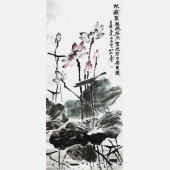 王兆奎
王兆奎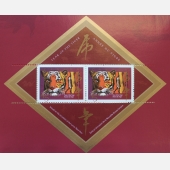 加拿大资深
加拿大资深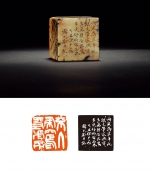 韩天衡
韩天衡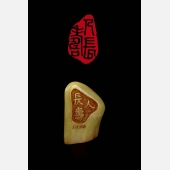 陈维廉
陈维廉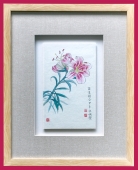 赵映璧
赵映璧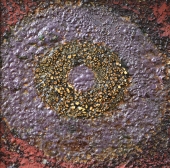 魏新
魏新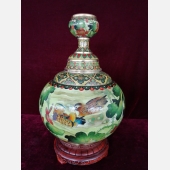 米振雄
米振雄 康蕾
康蕾